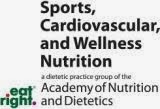You may
reach for that protein shake after your workout, but what for? Many are aware
of the potent effects that resistant exercise has on muscle protein synthesis. And
when combined with protein post-workout, muscle protein synthesis has been
shown to be stimulated even further. But, when should you consume your protein,
from what protein source, and how much?
So,
does this mean the infamous half-hour “anabolic window” is true? Well, not
necessarily. The Sports Science Exchange, looked at several chronic studies.
The chronic training studies suggest the “window” during which protein should
be consumed is likely less than 2 hours following exercise in order to support
greater increases in lean body mass and muscle hypertrophy in younger adults.1
Whereas in one acute study, it was translated to consume a source of protein
within a 1 hour after exercise to support greater hypertrophy with resistance
training.1
What
about the protein source? Chances are your choice is a whey protein powder.
But, do whole milk proteins or soy protein have a greater impact on muscle
protein synthesis? Well, according to the Sports Science Exchange, both whole
milk proteins and soy proteins in isolation or as a supplement were able to
support muscle protein growth after a weight lifting session. Concerning whole
milk proteins, it was found that whole milk was superior to fat-free fluid milk
in the ability to build muscle after exercise.1 Topping all however
was a rapidly digested whey protein hydrolysate. The Journal of Applied
Physiology found the whey protein hydrolysate to be more effective than both
soy and micellar casein – the form of casein in milk – in stimulating both
muscle protein synthesis at rest and following resistance exercise. The correlation was the peak leucine – a
branched chain amino acid – concentration.2
Alright
so we know when to take the protein and what protein source is optimal for
muscle protein synthesis, but how much protein is necessary? The muscle protein
response in both young and older people was found to plateau at approximately
10 grams of indispensable or essential amino acids.3 Interestingly,
as muscle protein synthesis plateaus, the “extra” amino acids are simply being
burned for fuel.1 Thus, the idea of “more is always better,” is
certainly not applicable to large quantities of amino acids and/or protein in
the hopes of induced or accelerated gains in muscle mass. In contrast,
consuming 20 grams of high-quality protein – such as whey protein – will
optimally maximize the stimulus of muscle protein synthesis.1 Also
throughout the day, it is a good idea to consume protein at spaced intervals to
maximize the anabolic response – about 0.25 g protein per kg of body mass per
meal.1 Of course, larger athletes may require more protein in order
to maximize muscle protein synthesis in comparison to smaller athletes. Aim for
1.2-1.6 grams of protein per kg a day. This amount is adequate and more than
required by the majority of athletes.1 Talk with your Sports
Dietitian to assess your individual needs based on your exercise regimen and
sport.
Gavin
Van De Walle is an ISSA Certified Fitness Trainer, a NANBF Natural Competitive
bodybuilder, and a dietetic student at South Dakota State University. Following
graduation, Gavin will pursue his Ph.D. in nutritional sciences while aiming to
make a positive impact on the over well-being and nutritional status of the
American people along the way.
References
1.
Stuart M. Phillips. Protein consumption and resistance
exercise: maximizing anabolic potential. Sports
Science Exchange. (2013) Vol. 26. No. 107, 1.5.
2.
Tang, J.E., D.R. Moore, G.W Kujibida, M.A.
Tarnopolsky, and S.M Phillips (2009). Ingestion of whey hydrolysate, casein, or
soy protein isolate: effects on mixed muscle protein synthesis at rest and
following resistance exercise in young men. J.
Appl. Physiol. 107: 987-992.
3.
Cuthbertson, D., K. Smith, J. Babraj, G. Leese,
T. Waddell, P, Atherton, H. Wackerhage, P.M. Taylor, and M.J. Rennie (2005).
Anabolic signaling deficits underlie amino acid resistance of wasting, aging
muscle. FASEB J. 19: 422-424.

.jpg)
